If you’re lucky enough to ever have the chance to go, TAKE IT (it’s worth the money).
We’d debated visiting the Galapagos ever since we first decided we were going to come to South America. At first, we’d categorically decided against it as we knew it would shave at LEAST a month off our time here. While researching though, we changed our minds a lot… particularly when speaking to other people about whether to go or not (they’d always try to convince us we should, Anders I’m talking to you!) On leaving the UK however, we’d come full circle and were firmly on the NO GO team. Then we got to Ecuador…
Before doing the beautiful Quilotoa Loop trek, we spent three nights in the old town of the Ecuadorian capital, Quito. The three days we spent there were research-heavy. After speaking to other travellers who had visited the archipelago, once again we were tempted. We needed to decide, and we’re terrible at making decisions. We spent hours in our hostel, groggily reading every ‘budget Galapagos’ blog entry we could find. To visit the islands, most people organise one of many (sell your organs, they can be that expensive) cruises from the mainland, however it’s also possible to visit a smaller number of the 19 islands independently and ideally, a little more ‘cheaply’. After many cups of free tea and a sprinkling of mutual frustration, we booked a flight. We decided that diving in the Galapagos (one of the top destinations on THE PLANET for diving) as well as seeing native wildlife up close and personal was something that was actually, at the top of both of our ‘to do’ lists. ¡VAMOS!
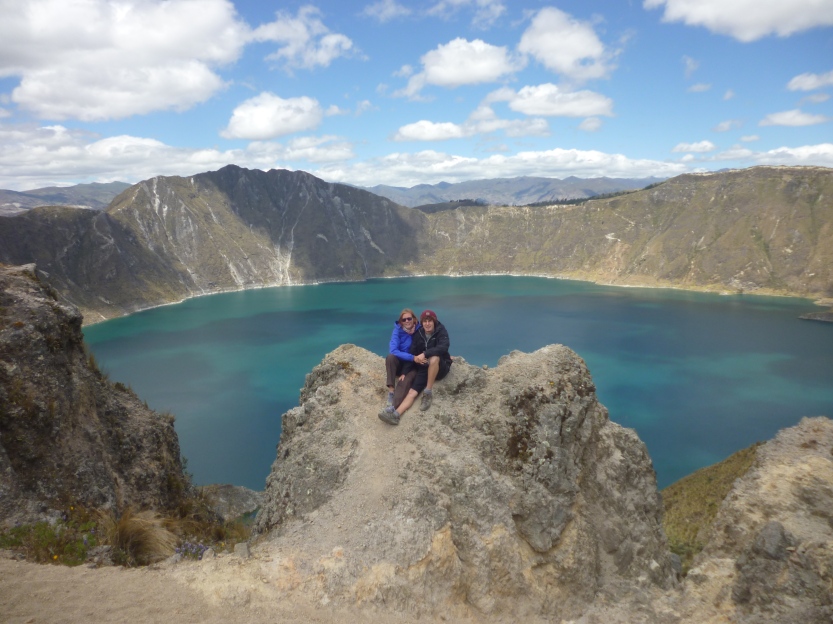
After a couple of beautiful weeks spent in and around the awe-inspiring Volcan Cotopaxi, we made our way south to Ecuador’s second most important city, Guayaquil, from where we flew direct to Isla San Cristobal, the furthest east of the islands. We arrived into warm air and light winds at the island’s tiny airport and joined the ‘foreigners queue’ ready to hand over $100 each (cash only!) which is the current park entrance fee for non-Ecuadorians. (There’s also a $20 tourist visa fee which must be paid prior to checking in at the airport). Once we were $200 lighter, we made our way out into the street. We were officially in the Galapagos!
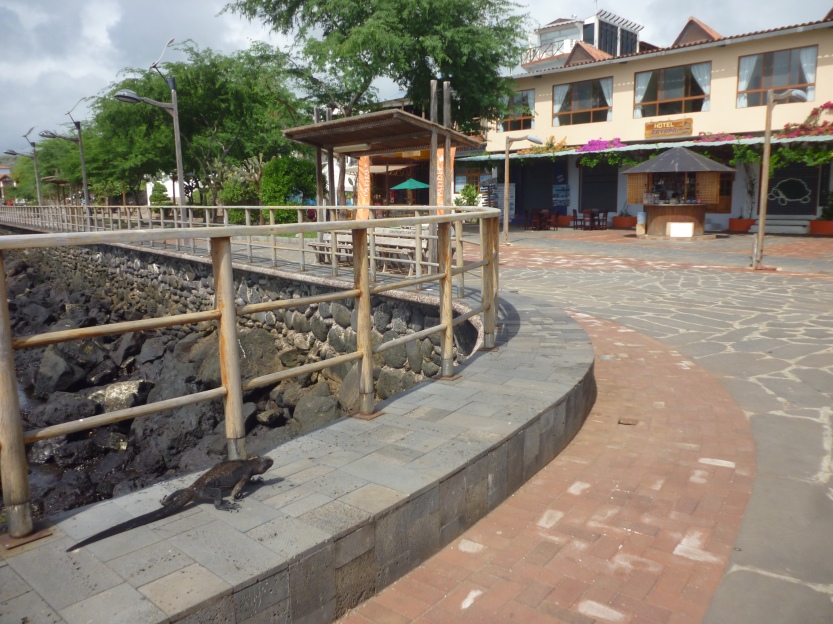
We walked from the airport into the town of Puerto Baquerizo Moreno – the inhabited area of the island really is that small – and spent half an hour checking out different hostels before eventually arriving at ‘Casa Laura’ and taking a double room for $30 a night (most hostels in the Galapagos are more like cheap hotels than hostels). We dumped our stuff, were overloaded with information about the island by the lovely old Ecuadorian man who runs Casa Laura then headed out to grab a little food and explore. We grabbed a typical, cheap ‘almuerzo’ (lunch) at a little place called ‘Lucky’s’ that our host had recommended then took a walk along the sea front.
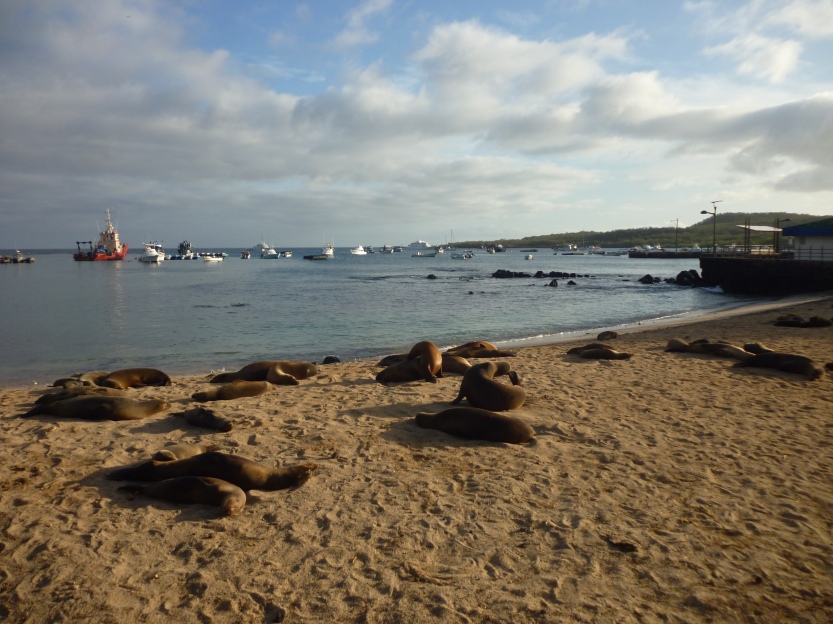
Immediately we were greeted by a huge group of sea lions slumped along the beach, as well as two or three curled up in the shade asleep on the pavement – it was ridiculous and amazing! We walked further along to the pier where we watched them swimming and playing with each other, bright red crabs, pelicans and even a turtle visible from the main pier. Incredible. We made our way slowly to the museum on the island, which is actually a really good place to learn about the (dark!) history of the islands, and then further along lizard lined wooden boardwalks to different ‘miradors’ (lookout points) and finally to another beach, again lined with sea lions. At the end of the beach, there was a little lighthouse which we made our way to, climbing over piles of jet black lava rocks. Once at the lighthouse, we spotted a small group of blue-footed boobies, probably the most famous of the birds of the Galapagos. On the scramble back, we nearly stepped on two miniature Godzillas laid out on the lava rock, otherwise known as marine iguanas these guys are truly monstrous looking.
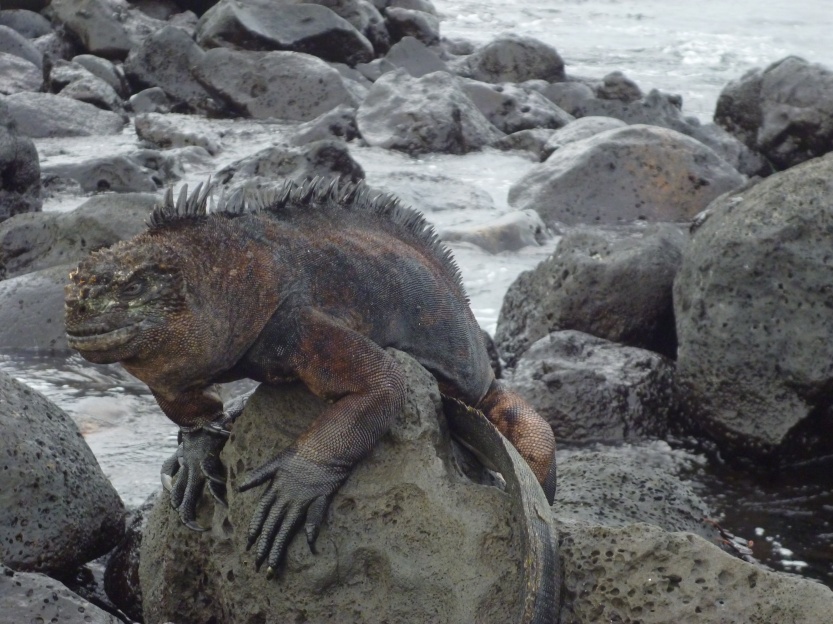
That evening, we grabbed a beer and watched the sunset over the port, sea lions splashing in the clear sea water below us. We’d only been on the islands for a few hours and we’d already seen so much – what we really wanted to see though, was underwater. After beers, we spent a good hour walking between the different dive shops seeing what they offered. Prices were high, as we expected, with a snorkelling trip to nearby ‘kicker rock’ costing no less than $100pp. A little later, after some food, we found a dive shop offering two dives for $120pp… only $20 more than snorkelling. I was a little nervous after my Colombian dive experiences, but hey, we now had our PADI’s and were in one of the top dive destinations on the world – what better location to test out our new skills, huh? We signed up, tried on all of our gear and then made our way back to our hostel and to bed nervous but excited for our two dives the next morning.
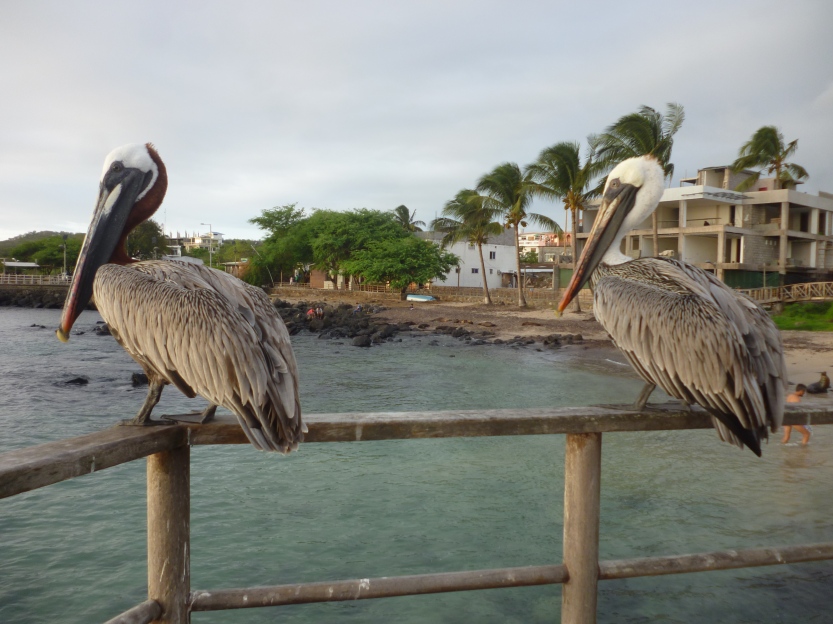
We got up bright and early and made our way out for breakfast in the morning sun before meeting at the dive centre at 8am. There were only four of us going out for the dive, me, Olly, our Ecuadorian dive instructor Daniel and a British guy who was training to become a Dive Master. A really nice sized group. We got our gear into a pick up truck, drove the short distance to the pier and threw everything aboard the boat. Sitting in the boat, I was feeling pretty nervous about my first post-PADI dive, so for our first tank Daniel suggested we head for a really chill dive location not far from the coast.
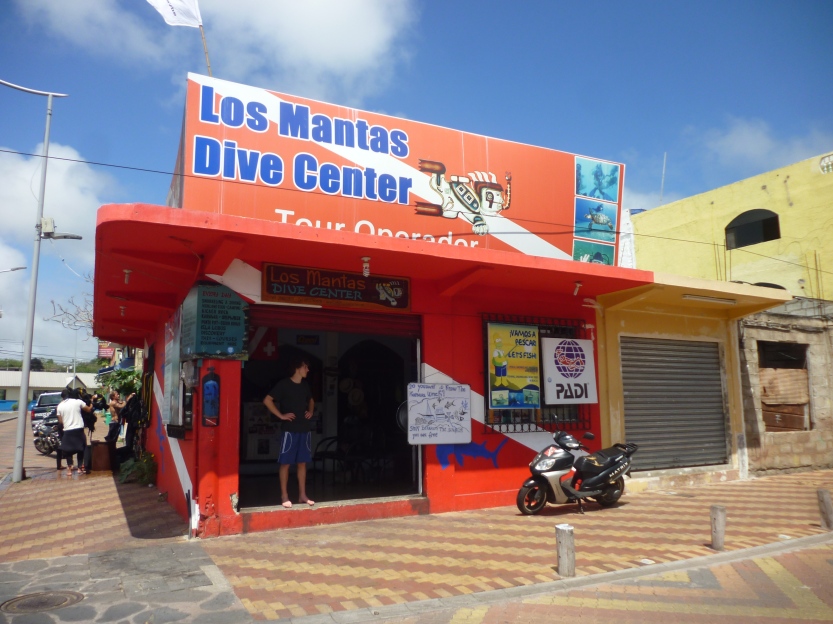
From the minute we got in, it was already the best dive we’d done. The water was so calm and clear, the sun was shining and there was barely a current. …and there was SO much to see. Only a few minutes into the dive, we had two sea lions circling us, coming right up to our faces and playing with us under the water – it really was awesome, in the real sense of the word. We saw GIGANTIC green sea turtles, watching them relaxing under rock formations, or swimming right behind them. One swam right towards me in the slow-motion way they do. It was mesmerising. I didn’t realise how big they were or just how gracefully they move. We saw so many different types of fish, octopus, a lobster and even a huge black ray right at the end of the dive. It was incredible, and probably my favourite experience of South America so far. It really is a totally different world under the waves.

After our first dive, we took a break on the boat and had a drink and something to eat. We were buzzing as we sat on the boat in the sun, wetsuits drenched. Our second dive was a wreck dive just off the coast of Puerto Baquerizo Moreno. (I still need to do more research into the history of the wreck) I actually managed to descend by myself, meeting Olly and the British guy on the sea floor while we waited for Daniel. We didn’t see as much sea life as in the first dive, but there were still tons of fish and the wreck was much bigger than I’d imagined (although my mask fogged up relentlessly for most of the dive, so I couldn’t see QUITE as much as I’d have liked, haha). We even swam through a section of the wreck at the end of the dive. All in all, it was a really great day, one of my favourites. Beautifully sunny, incredible visibility and even more incredible interactions with the sea life there. The British guy who dove with us, said it was one of the best he’d done for the number of (and size of the) sea turtles we’d seen. Diving in the Galapagos – highly, highly recommended.

The next morning, we caught the early morning, three hour boat to Santa Cruz Island (we saw dolphins on the way!). Santa Cruz is the ‘main’ island for beginning and organizing tours of the The Galapagos, and is the airport most people fly into. Again, we walked around the island a little scoping out hostels and eventually ended up at hotel, which was cheaper (and much nicer) than the hostels we’d checked out. We grabbed a really nice breakfast in the ‘Galapagos Deli’, explored a little and that afternoon walked to the giant tortoise breeding centre where we saw our first captive giant tortoises, from tiny babies through to huge, ancient adults. The next day however, we saw our first wild giant tortoises. We grabbed a taxi after breakfast, complete with our very own driver-come-tour guide, and drove out of the main tourist area and up into the highlands of Santa Cruz past banana farms and small villages. After a while, we arrived. Our guide took us into the reserve and (after being forced to climb INSIDE a giant tortoise shell for photographs, aye, that actually happened) we walked towards the woods and within minutes were face to face with a giant tortoise, and then another, and then another! They were everywhere and they were freakin’, HUGE. They have faces like E.T. and they actually ‘creak’ as they move. I’ve never seen anything like them.
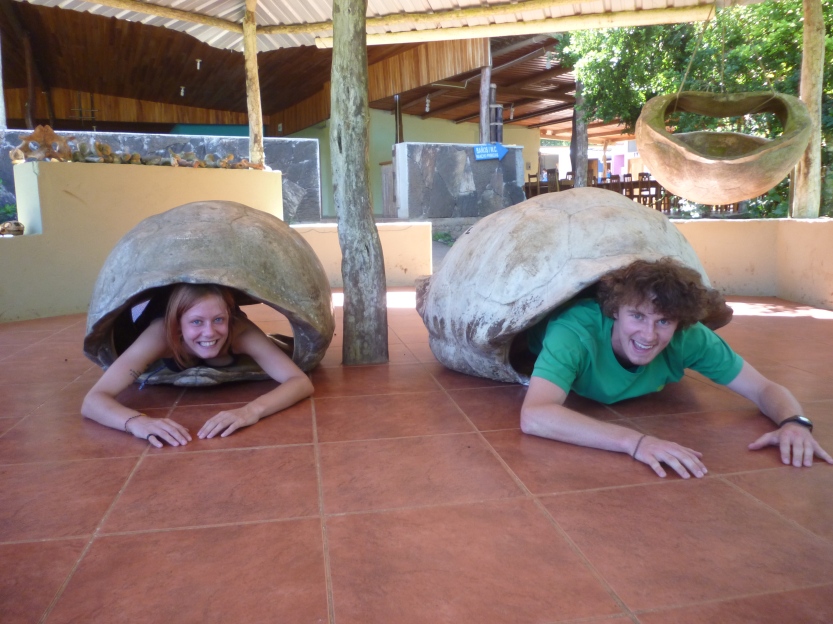
After a mesmerizing hour spent with the giant tortoises, we visited a nearby lava tunnel, one of many huge underground tunnels created by underground lava flow thousands of years ago. On the way back to town, we also stopped off at two giant sink holes. They were an impressive sight to behold, two huge chunks of earth which had seemingly just disappeared and now, thousands of years later, were filled with lush green forests, birds and vines clinging to the rock walls of each.
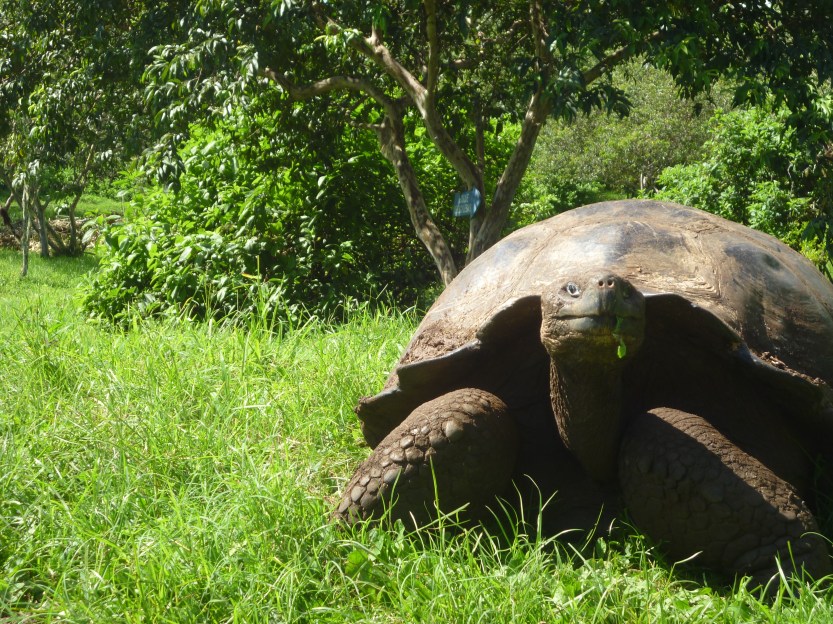
After a night on Santa Cruz, we made our way (again by a three hour CHOPPY boat ride) to Isla Isabela, the largest of the Galapagos Islands. Isla Isabela, in my opinion, was the most beautiful of the islands we visited, with no paved roads, beautiful beaches and lovely locals (it was also the place our camera decided to stop working). We spent two nights on Isabela. The first day we hired two bikes, snorkels and a pair of fins each and rode along a beautiful path by the sea passing LOTS of iguanas, wild tortoises and lava lizards. We saw the pinkest flamingos (where we also bumped into a couple of friends we’d met in Cotopaxi), rode to the infamous ‘wall of tears’, climbed along iguana covered lava tubes and spotted sea turtles from the shore. Towards the end of the day, we made our way to ‘Concha de Perla’, the island’s most famous snorkelling spot, and for good reason. It’s a huge, deep cove of still, clear water full of all kinds of fish and sea life – it was a lot of fun. We snorkelled with marine iguanas, lots of different types of fish and even a tiny Galapagos penguin (much to Olly’s joy, he’d been searching out penguins since we arrived on Isabela) …and on the walk home, I even jumped in with a couple of sea lions for five minutes of underwater play. Not a bad way to spend a day, huh?
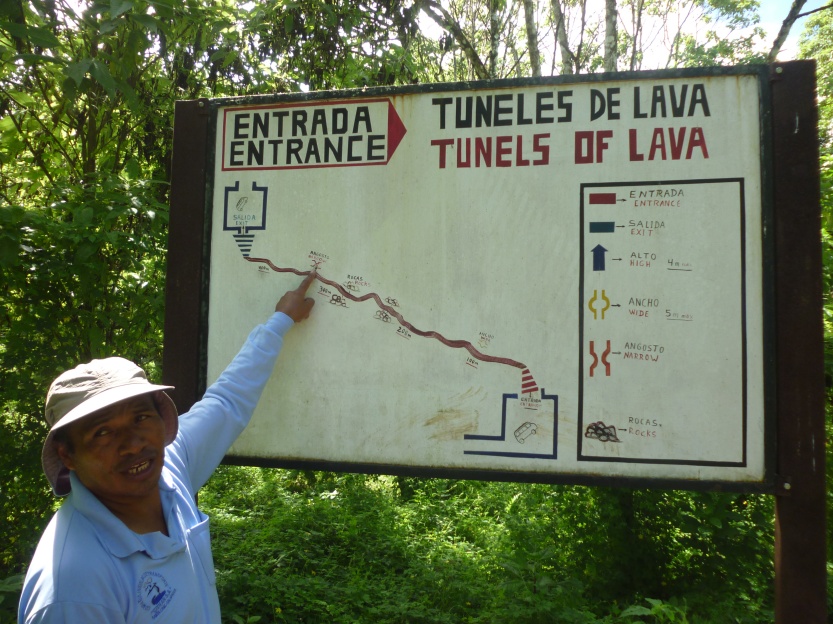
After two lovely days on Isabella, we caught the late boat (seeing more dolphins!) back to Santa Cruz for two more nights before our flight back to mainland Ecuador early on Tuesday morning. We had wanted to stay an extra night on Isabella, but there weren’t any dive agencies on the island and we really wanted to do one last dive before leaving, so back to Santa Cruz it was. HEARTBREAKINGLY though… once we arrived back in Santa Cruz, there weren’t any spaces left to dive the next day, even though we’d tried to book online… so after a couple of hours total heartbreak at not being able to dive with hammerhead sharks (THIS TIME!) we got over ourselves (by we, I mean me) realised how lucky we were to have been able to dive even once on the islands and instead ate out that night, spent the next day swimming and snorkelling in the beautiful ‘Las Grietas’ (a crystal clear crack in the land filled with parrot fish) and drank a whole BUNCH of caipirinhas on our last night. Not bad for a Plan B.
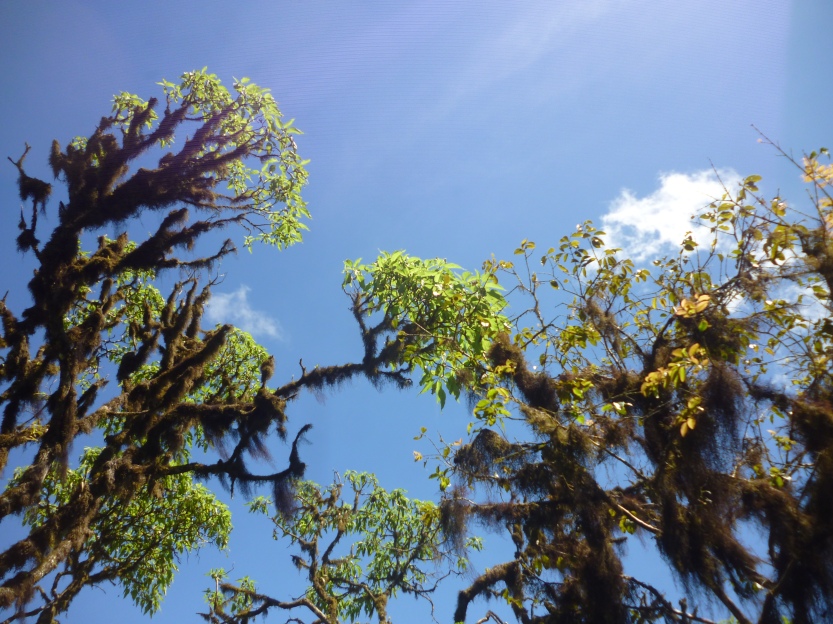
So, we didn’t get to see sharks this time, but we got up close and personal with so much of other the wildlife – it really is just like everyone says it is. Diving was completely amazing and has well and truly got me fired up for diving again as soon as I can (fancy Malta, Louise?) and even though we’ll be going home a little earlier than if we hadn’t have gone, we both agree, it was totally worth it for the experiences we had. The Galapagos (or the few islands we managed to see on this trip) particularly underwater, really is an enchanting place and I hope that it stays that way for years to come. (Although the Ecuadorian government, sadly, might have other plans for the legendary ‘Islas Encantadas’.)
Once we’re back in the UK, I’ll write up a separate page just for the Galapagos with photographs, travel information and a more detailed account of how much the whole shebang cost us so that those planning to go have a better reference for planning their own trip. Either way, whether a budget trip like ours, or something a little more luxurious, if diving, snorkelling or general wildlife spotting is your thing, GO!